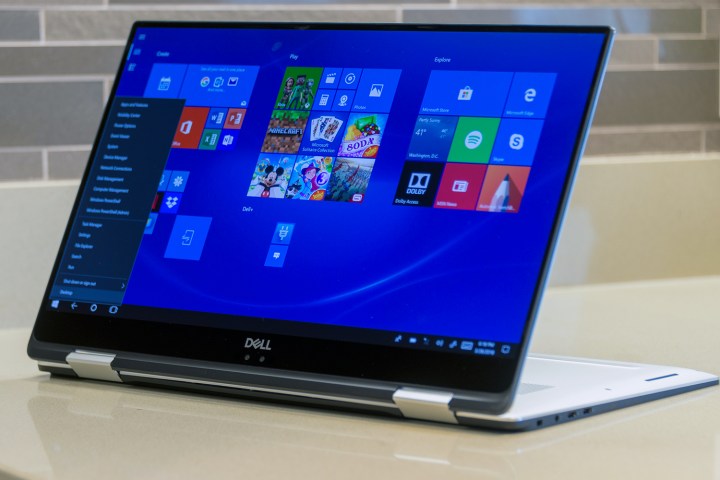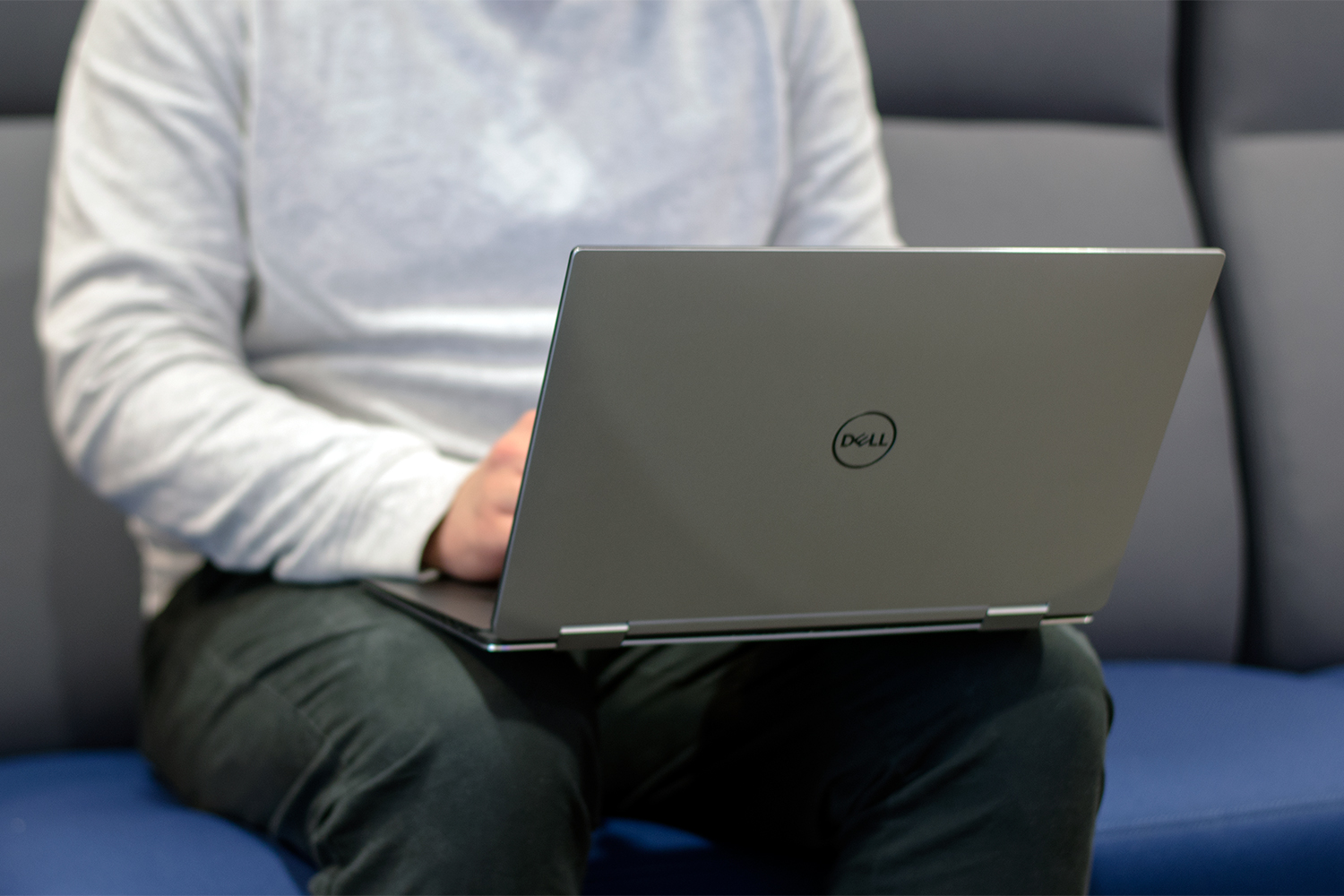
When it comes to convertible laptops, power and versatility don’t always go hand in hand. However, a new-generation of hardware that combines Intel processing with AMD graphics on the same chip and a 2-in-1 form factor, promise to turn that paradigm right on its head.
Both HP and Dell have impressive offerings in that new market niche, but how do they compare? In this head to head, we pit the HP Spectre x360 15 vs. the Dell XPS 15 2-in-1 to see which offers the best bang for buck when it comes to powerful, portable and convertible computing.
Design

The design of a 2-in-1 laptop is arguably more important than it is in a standard laptop, because it not only needs to operate as a good-looking, functional laptop, but as an easy to hold tablet too. Both the Dell XPS 15 2-in-1 and HP Spectre x360 15 do a reasonable job in both states of being, but they do have their quirks that help differentiate them in specific ways.
The XPS 15 2-in-1 isn’t quite as good a notebook laptop as the Spectre x360 15, because its keyboard has an extremely short travel distance to save space. That does make it more of a comfortable, low-weight device when in tablet mode, but it means that it’s just not as nice to type on as the HP counterpart. Then again, the Spectre does suffer from being rather chunky for a modern laptop. It’s not the lightest device either.
The standard-laptop functionality of the HP device extends into its port selection too. Where the XPS 15 2-in-1 has gone all-in on USB-C — offering four of them alongside an SD card slot — the Spectre x360 15 offers a USB-A port alongside a pair of newer Thunderbolt 3 ports and an SD card slot. That’s a nice touch for contemporary backwards compatibility, though it may also date the HP 2-in-1 in years to come.
Performance

One of the most exciting elements of both of these 2-in-1s, is that they can be configured to use the new Intel eighth-generation G-series processors, which combine an Intel CPU core with AMD Vega graphics. Each has their own options in that respect, with the $1,300 XPS 15 2-in-1s offering an i5-8305G, 8GB of RAM, and 128GB of solid state storage, up to an i7-8705G with 16GB of RAM, and up to a terabyte of storage for up to $2,550.
In comparison, the HP Spectre x360 15 also offers a non-G Intel Core i7-8550U CPU with an MX 150 and 8GB of RAM for $1,270 at the low-end, and an i7-8705G with 16GB of RAM, and up to two terabytes of storage at the top end, with a price tag just north of $2,200.
Although there is a little tussling between the two systems in terms of pricing at the top end, both offer similar specifications for similar prices at the mid-range. In our testing, they performed very close to one another in both day-to-day tasks and 1080p gaming. These are both seriously fast systems that will feel snappy and capable for years to come.
The differentiator between them however, is in their displays. Where the Spectre laptop can only be configured with a 4K IPS panel, the Dell offering has a 1080p option that can save you a lot of money and battery life. That said, the XPS 15 2-in-1’s display is gorgeous. In our testing we found it to be comparable with market leaders like the Surface Book 2. The HP Spectre’s has a sharp, vibrant image, but it falls behind the XPS 15 2-in-1 in terms of contrast ratio and overall brightness.
Portability

When it comes to tablet mode operation, portability in a 2-in-1 is a must. That’s where these two devices start to differentiate from their otherwise relatively comparable designs. Where the HP Spectre x360 15 is 14.13 x 9.84 x 0.76-inches, the XPS 15 2-in-1’s slimmer keyboard and overall framework give it a trimmer design at 13.9 x 9.2 x 0.63-inches, narrowing to just 0.36-inches at its thinnest. That, combined with a weight difference of nearly a third of a pound, makes the XPS 15 2-in-1 just that bit easier to handle in both tablet mode and when in transit.
The Spectre x360 15 does claw its way back into the lead in terms of battery life though. With a massive 84-watt-hour battery under the hood, it managed six and a half hours in our web-browsing test, where the Dell option only managed four and a half.
Neither are great though, and we’d put most of the blame on the 4K display, even if the hefty CPU/GPU combination chip is quite power hungry in its own right. If you were to opt for the 1080p screen on the XPS 15 2-in-1, we’d put money on the results being reversed.
Heft is a hard sell, but the XPS 15 2-in-1 wins out

Although neither the Dell XPS 15 2-in-1 or the HP Spectre x360 15 are better laptops than some of their non-convertible competition, they do offer a pretty unique package. The Dell XPS 15 2-in-1 just happens does it a little better.
Performance between the two devices is much the same, but the Dell 2-in-1 has a nicer display overall and with the option for 1080p — something that’s far more fitting for a 15-inch laptop display — can be more kindly to your bank balance and battery life.
While the HP 2-in-1 certainly has a better keyboard, its slightly bulky design and increased weight mean that we found it more comfortable to use as a laptop with some impressive gaming chops, though tablet use is pretty untenable. The XPS 15 2-in-1 didn’t blow us away in every area either, but it does things just that little bit better than the HP competition and offers the better overall 2-in-1 experience.


